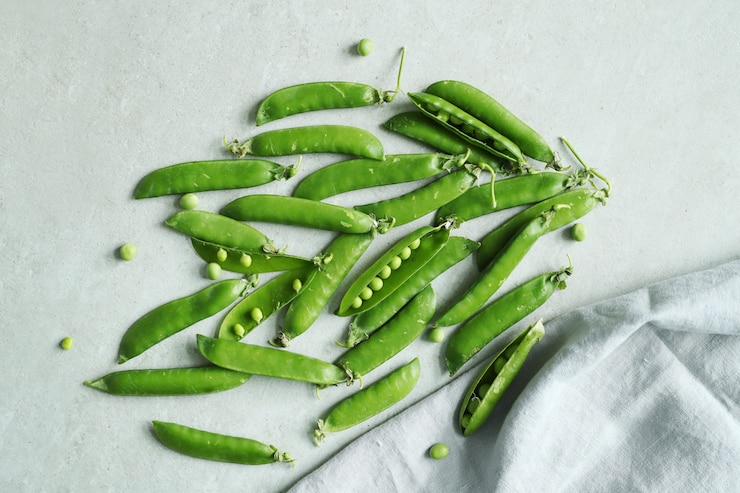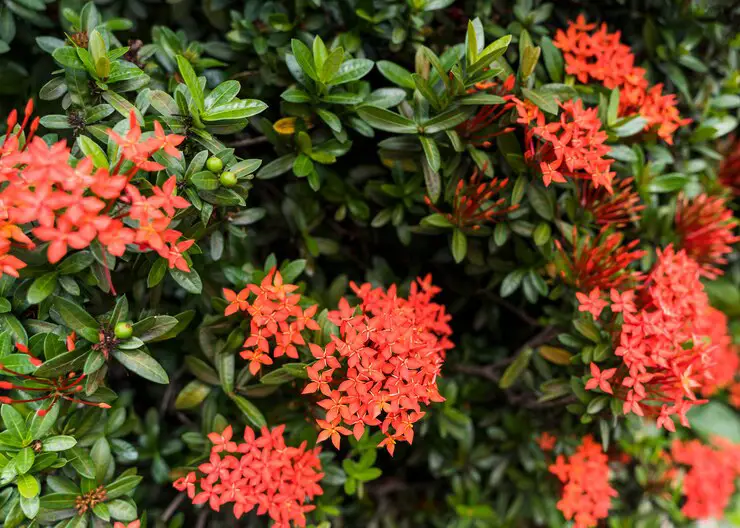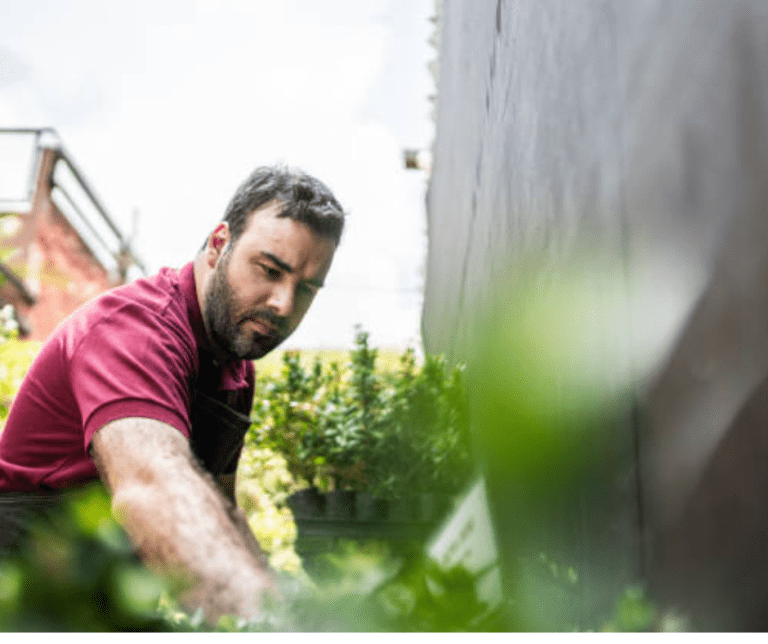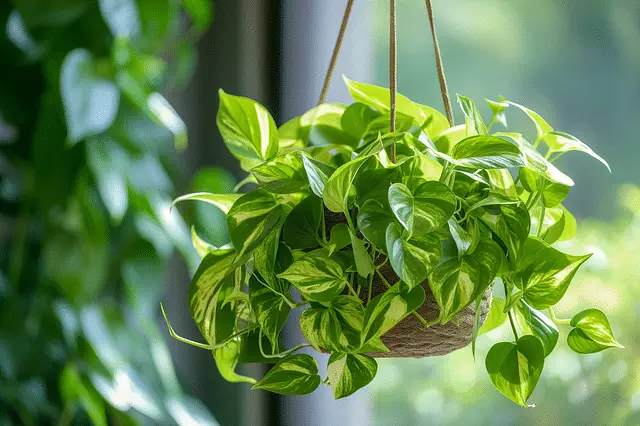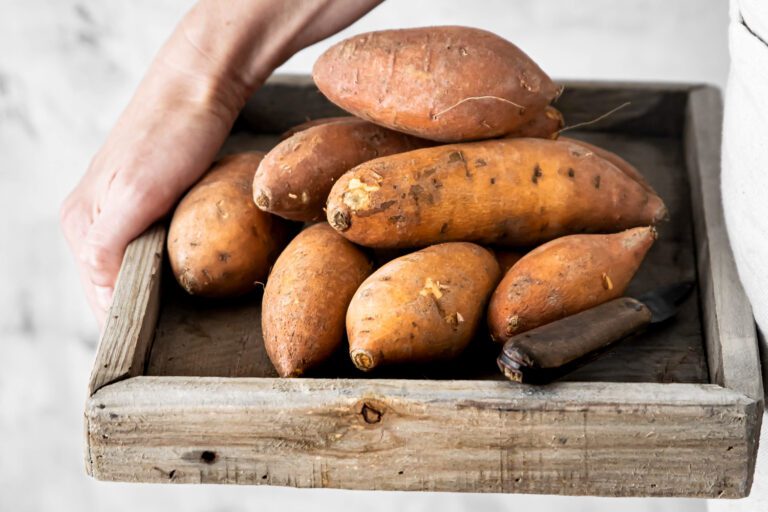White Pumpkins: Care, Types, and Growing Secrets
Table of Contents
White Pumpkin Varieties
When it comes to white pumpkin varieties, there are several intriguing options available for gardeners to explore. One popular variety is the Lumina, known for its smooth, pale skin and vibrant orange flesh. This variety not only adds a touch of elegance to autumn displays, but it also boasts a deliciously sweet flavor that is perfect for culinary creations. Another noteworthy variety is the Cotton Candy, which lives up to its name with its creamy white skin and sweet, cotton-like texture. This unique pumpkin variety is a favorite among children and adults alike, adding a whimsical touch to any fall arrangement. Lastly, the Baby Boo is a miniature white pumpkin variety that makes a charming addition to tabletop decorations and seasonal centerpieces. Its small size and smooth texture make it an ideal choice for crafting and decorating, allowing creative minds to add their personal flair to Halloween and Thanksgiving displays.
No matter which white pumpkin variety gardeners choose, each one brings its own special qualities to the garden. With their striking appearance and delicious flavor, these unique pumpkins are sure to delight both the eyes and taste buds of gardening enthusiasts and autumn enthusiasts alike. So, whether you’re a first-time gardener or a seasoned pumpkin grower, consider adding a touch of elegance and whimsy to your garden with these stunning white pumpkin varieties.

Choosing the Right Soil for White Pumpkins
Choosing the right soil for white pumpkins is crucial for their growth and overall health. White pumpkins, like their orange counterparts, thrive in well-draining soil that is rich in organic matter. It is best to select a location with loamy soil, as this type of soil provides a good balance of drainage and moisture retention.
Before planting white pumpkins, it is recommended to test the soil pH. Ideally, the pH level should be around 6.0 to 6.8, slightly acidic to neutral. This range ensures optimal nutrient availability for the plants. If the soil pH is too acidic, lime can be added to raise it. On the other hand, if the pH is too alkaline, sulfur can be added to lower it.
White pumpkins require soil that is well-cultivated and free from rocks, clumps, and debris. Amending the soil with organic matter, such as compost or well-rotted manure, can greatly improve its quality. Organic matter enriches the soil by providing essential nutrients and improving its ability to retain moisture. Additionally, it aids in root development and microbial activity, which is important for nutrient absorption and overall plant health.
When preparing the soil, it is advisable to provide adequate drainage by incorporating organic materials and creating raised beds if necessary. White pumpkins are susceptible to root rot and other fungal diseases if they are exposed to excessive moisture for prolonged periods. Therefore, ensuring proper drainage will help prevent waterlogging and potential problems with plant health.

In conclusion, white pumpkins thrive in loamy, well-draining soil with a slightly acidic to neutral pH. Preparing the soil by amending it with organic matter and ensuring good drainage will go a long way in promoting the growth and productivity of white pumpkins.
Sunlight Requirements for White Pumpkins
One of the most important factors to consider when growing white pumpkins is providing them with the right amount of sunlight. Like their orange counterparts, white pumpkins thrive in full sun conditions. These plants require a minimum of 6 to 8 hours of direct sunlight each day to grow and produce healthy fruits. Without adequate sunlight, white pumpkin plants may become weak, leggy, or fail to flower and set fruit.
To maximize sunlight exposure, it is essential to select a suitable location for your white pumpkin patch. Choose an area in your garden that receives the most sunlight throughout the day, preferably with minimal shade from nearby trees or structures. Observing the sun’s path and considering any potential obstructions will help ensure that your white pumpkins receive ample sunlight. Additionally, be mindful of the time of year when planning your garden layout to avoid excessive shade from surrounding plants as they grow.

Watering Techniques for White Pumpkins
When it comes to watering white pumpkins, it is important to strike the right balance to ensure healthy growth and abundant yields. White pumpkins, like their orange counterparts, require adequate moisture to thrive, but overwatering can lead to root rot and other issues. The key is to provide consistent and even moisture without saturating the soil.
One effective watering technique for white pumpkins is to use a drip irrigation system. This method delivers water directly to the base of the plants, minimizing evaporation and ensuring that moisture reaches the roots where it is needed most. Drip irrigation also helps to prevent leaf wetting, which can increase the risk of diseases. Additionally, using mulch around the plants can help to retain soil moisture and reduce water loss through evaporation. Soaker hoses can also be used to achieve similar results, delivering water slowly and evenly to the root zone.
In conclusion, maintaining proper watering techniques is crucial for cultivating healthy white pumpkins. Utilizing methods such as drip irrigation or soaker hoses can provide the necessary moisture without excessive saturation, promoting vigorous growth and preventing issues like root rot. By following these techniques, gardeners can give their white pumpkins the best chance for success.
Fertilizing White Pumpkins
White pumpkins, like any other variety, require proper fertilization to ensure healthy growth and optimal yield. When it comes to fertilizing white pumpkins, timing and choosing the right fertilizer are key.
In the early stages of growth, a balanced fertilizer with equal proportions of nitrogen, phosphorus, and potassium (N-P-K) is ideal. This will provide the necessary nutrients for the plant’s overall development. As the plants begin to flower, it is beneficial to switch to a fertilizer higher in phosphorus to promote fruit set and development. A fertilizer with an N-P-K ratio of 5-10-10 or 10-20-20 can be a suitable choice during this stage.
It is important to note that over-fertilizing can lead to excessive vegetative growth at the expense of fruit production. To prevent this, it is recommended to check the soil pH and nutrient levels regularly. Conducting a soil test will help determine the specific fertilizer needs of your white pumpkin plants. Consider incorporating organic matter such as compost or well-rotted manure into the soil before planting, as this will provide slow-release nutrients throughout the growing season.
Furthermore, providing a steady supply of water after fertilization will aid in nutrient absorption and uptake. Remember to follow the manufacturer’s instructions for fertilizing rates and application methods, as different fertilizer brands may have specific guidelines. With the right fertilization practices, you can ensure robust white pumpkins that are primed for a bountiful harvest.
Preventing Pest Infestations in White Pumpkins
Preventing Pest Infestations in White Pumpkins
White pumpkins are not immune to pest infestations, and without proper preventive measures, these unwelcome visitors can quickly damage or even destroy your crop. It is essential to take proactive steps to protect your white pumpkins from common pests and ensure healthy growth.
One effective method for preventing pest infestations is regular inspection. Carefully examine your plants for any signs of pests, such as holes in the leaves, chew marks, or discoloration. Keep in mind that some pests may be small and hard to spot, so inspect both the foliage and the fruits. Early detection can help you intervene before the infestation worsens.
To further deter pests, consider using physical barriers. Row covers or nettings can be placed over your white pumpkin plants to create a barrier that prevents pests from reaching them. Additionally, installing sticky traps or pheromone traps around your garden can help capture pests like aphids, fruit flies, or leafhoppers before they have a chance to cause significant damage.
It is important to remember that prevention is key when it comes to managing pest infestations. By regularly inspecting your white pumpkins and implementing physical barriers, you can significantly reduce the risk of pests wreaking havoc on your crop. In the next section, we will discuss common diseases that white pumpkins can fall victim to and how to treat them effectively.
Common Diseases of White Pumpkins and How to Treat Them
White pumpkins, like any other plant, are susceptible to a variety of diseases that can affect their growth and overall health. Being aware of these diseases and understanding how to treat them is essential for ensuring a successful and abundant harvest. One common disease that white pumpkins can encounter is powdery mildew. This fungal infection appears as a white, powdery coating on the leaves, stems, and fruit of the plant. Powdery mildew can weaken the plant, stunt its growth, and reduce the quality of the pumpkins. To treat powdery mildew, it is important to act promptly. Remove any infected plant material and dispose of it properly. Additionally, you can apply a fungicide specifically formulated for powdery mildew to control its spread. Proper air circulation and avoiding overcrowding plants can also help prevent the development of this disease.
Another disease that white pumpkins can fall prey to is downy mildew. This fungal infection presents itself as yellow spots on the leaves, followed by a fuzzy white or gray growth on the undersides. Downy mildew can rapidly spread and cause severe damage to the pumpkins. To treat this disease, it is important to act quickly. Remove any infected plant material and dispose of it properly to prevent further spread. Applying a fungicide targeted for downy mildew can also help control the infection. Additionally, ensuring proper spacing between plants and adequate air circulation can minimize the risk of downy mildew developing.
White pumpkins, also known as “ghost” pumpkins, are susceptible to various diseases. The table below summarizes common pumpkin diseases and their treatments:
| Disease | Symptoms | Treatment |
| Powdery Mildew | White “powdery” covering of spores on lower leaf surface, eventually defoliating plants. | Rotate with non-cucurbit crops. Treat with fungicide at the first sign. |
| Downy Mildew | Yellow spots or angular water-soaked areas on upper leaf surface. Lesions become necrotic. | Use broad-spectrum fungicides. Plant early-season varieties to reduce risk. |
| Anthracnose | Small, light brown spots with darker margins. Expands to holes in leaves and lesions on fruit. | Begin treatment early with fungicides. |
| White Speck | Notched, irregular white spots on leaves. | Apply fungicides preventively. |
| Gummy Stem Blight | Dark, sunken lesions on stems and fruit. | Remove infected plant parts. Use resistant varieties. |
| Black Rot | Dark, sunken lesions on fruit. | Remove affected fruit promptly. Avoid overhead irrigation. |
| Fusarium Crown Rot | Wilting, yellowing, and collapse of plants. | Plant in well-drained soil. Avoid overwatering. |
Harvesting White Pumpkins at the Right Time
Harvesting white pumpkins at the right time is crucial to ensure their optimal flavor, texture, and longevity. Unlike traditional orange pumpkins, white pumpkins have a unique ripening process that requires careful observation and assessment. The ideal time to harvest white pumpkins is when the skin has fully developed its characteristic pale white color and the fruit has reached its mature size.
To determine if a white pumpkin is ready for harvest, gently tap on its skin. If it produces a hollow sound, it is a sign that the pumpkin is ripe. Additionally, the skin should be firm and tough, indicating that the fruit has reached its full maturity. It is important not to harvest white pumpkins too early, as immature fruits may not have developed the desired taste and texture. On the other hand, waiting too long can lead to overripeness, resulting in a softer and less flavorful pumpkin.
When harvesting white pumpkins, use a sharp knife or pruning shears to cut the fruit from the vine, leaving a few inches of stem attached. This stem not only adds to the aesthetic appeal of the pumpkin but also helps reduce the risk of rotting. Avoid twisting or tearing the pumpkins from the vine, as this can damage the fruit and increase the chances of spoilage.
Proper timing and careful harvesting techniques play a vital role in ensuring the quality and longevity of white pumpkins. By following these guidelines, gardening enthusiasts can enjoy the rich flavor and striking appearance of these unique pumpkins.
Storing White Pumpkins for Longevity
Storing White Pumpkins for Longevity
After a bountiful harvest of white pumpkins, it’s important to store them properly to ensure their longevity. Proper storage not only preserves the pumpkins’ freshness but also enhances their shelf life, allowing you to enjoy them for months to come. Here are some essential tips to help you store your white pumpkins effectively.
Firstly, before storing your white pumpkins, it’s crucial to prepare them for their dormant phase. Begin by carefully inspecting each pumpkin, ensuring they are free from any cuts, bruises, or signs of damage. Any damaged pumpkins should be consumed or used immediately to prevent spoilage. Then, wipe the pumpkins gently with a clean, damp cloth to remove any dirt or debris, taking care not to scrub too vigorously and damage the skin. Once clean, allow the pumpkins to air dry completely before moving on to the next step.

Tips for Propagating White Pumpkins from Seeds
Propagation from seeds is a cost-effective and rewarding way to expand your white pumpkin collection. To ensure success, start with high-quality seeds obtained from reputable sources. White pumpkin varieties such as Lumina, Cotton Candy, and Baby Boo are popular choices for propagation.
When sowing white pumpkin seeds, timing is crucial. Wait until the risk of frost has passed and the soil temperature reaches a consistent 70°F (21°C). Plant the seeds in well-drained soil enriched with organic matter. Prepare the soil by loosening it to a depth of 12 inches and removing any weeds or debris. Create small mounds and sow two to three seeds per mound, spacing them about 2 feet apart. Cover the seeds with 1 inch of soil and gently firm the surface. Water the area thoroughly, keeping the soil evenly moist throughout the germination period.
As the seeds germinate and seedlings emerge, ensure they receive adequate sunlight. White pumpkins require at least 6 hours of direct sunlight each day for optimal growth. If you are cultivating them indoors, use grow lights to supplement natural light. Aim to maintain a temperature of around 75°F (24°C) during the day and slightly cooler at night. Gradually acclimate the seedlings to outdoor conditions before transplanting them into the garden.
Remember, successful propagation depends on various factors, including soil quality, proper watering techniques, and reliable pest management. By following these tips, you can increase your chances of producing healthy white pumpkin plants from seeds and enjoy a bountiful harvest in the future.
Transplanting White Pumpkin Seedlings
Transplanting white pumpkin seedlings is a crucial step in their journey towards maturity and successful fruit production. It is essential to ensure the seedlings are strong and robust before transplanting them into the garden or your desired growing location. This will help them adapt better to their new environment and withstand any potential stressors.
Before transplanting, it is advisable to harden off the seedlings gradually. This process involves exposing them to outdoor conditions slowly, starting with a few hours of sunlight and gradually increasing the duration over a week. This helps the seedlings become acclimated to the outdoor environment, reducing the risk of shock when they are finally transplanted.
When choosing a location for transplanting, select a spot with well-drained soil that receives ample sunlight. White pumpkins require a minimum of six to eight hours of direct sunlight daily for optimal growth and fruit development. Ensure that the soil is rich in organic matter and has a pH level between 6.0 and 7.0, as this range is ideal for white pumpkin cultivation. Additionally, consider spacing requirements, allowing enough room for the vines to sprawl and the pumpkins to grow without getting overcrowded.
When transplanting the seedlings, dig holes that are slightly larger than the peat pots or containers in which the seedlings were originally planted. Gently remove the seedlings from their containers, being careful not to damage the delicate roots. Place each seedling in a hole and backfill with soil, lightly firming it around the base of the plant. Water thoroughly after transplanting to help establish the root system. Providing adequate moisture during this crucial period will support the seedlings’ growth and reduce the risk of transplant shock.
Remember, successful transplantation of white pumpkin seedlings sets the stage for healthy growth and abundant harvests. By following these guidelines and offering the seedlings the care they need, you can enjoy a bountiful crop of white pumpkins in your garden or chosen growing space.
Pruning Techniques for White Pumpkin Vines
To ensure healthy growth and optimal yield, it’s essential to employ proper pruning techniques for white pumpkin vines. Pruning not only controls the plant’s size but also promotes better air circulation and sunlight penetration, reducing the risk of disease and improving fruit quality. When pruning white pumpkin vines, it is crucial to remove any damaged, diseased, or dead leaves and stems promptly. Use sharp and clean pruning shears or a knife to make clean cuts, as jagged or torn edges can invite pathogens.
In addition to removing damaged foliage, it is beneficial to thin out the vine by selectively pruning excessive growth. Thinning helps divert the plant’s energy towards developing healthy and robust fruits while minimizing competition for nutrients and resources. Regularly inspect the vines and identify branches that are overly vigorous or competing for space with other productive parts. Make a strategic cut at the base of these branches, ensuring that you remove them completely without leaving any stubs. By selectively pruning undesirable growth, you encourage the plant to concentrate its resources on producing high-quality white pumpkins.
Training White Pumpkin Vines for Better Growth
Training the vines of white pumpkins is essential for promoting better growth and maximizing their yield. By utilizing proper training techniques, gardeners can ensure that the vines grow in a structured manner, allowing for better air circulation, disease prevention, and efficient use of space.
One effective training method is using trellises or sturdy supports to guide the vines upwards. This not only prevents them from sprawling across the ground but also encourages vertical growth. By training the vines to climb, gardeners can optimize the use of limited space, making it easier to manage and maintain the pumpkin patch. Moreover, vertical growth promotes better exposure to sunlight, which is crucial for the photosynthesis process and overall plant health.

Managing Weeds in White Pumpkin Beds
Proper weed management is crucial when it comes to maintaining healthy and thriving white pumpkin beds. Weeds not only compete with white pumpkin plants for essential nutrients, but they can also create a favorable environment for pests and diseases. To ensure the best growth and yield of your white pumpkins, it is essential to employ effective weed control strategies.
One strategy for managing weeds in white pumpkin beds is through the use of mulch. Applying a layer of organic mulch around the base of the white pumpkin plants can help suppress weed growth by blocking sunlight and preventing weed seeds from sprouting. Organic materials such as straw, wood chips, or compost can be used as mulch. It is important to apply a thick layer, about 2-3 inches, to effectively smother the weeds. Additionally, make sure to leave a small space around the base of the white pumpkin plants to prevent the mulch from touching the stems, which can lead to rot or disease.
Another effective method for weed management is hand-weeding. Regularly inspecting the white pumpkin beds and manually removing any emerging weeds can help prevent them from establishing deeper roots and spreading. It is important to pull the weeds from the root to ensure they are completely removed. A tool such as a handheld weeder can make the task more efficient and minimize disturbance to the white pumpkin plants. It is recommended to hand-weed during the early morning or late afternoon when the soil is slightly moist, as this makes it easier to uproot the weeds. Implementing a regular weed-check routine will go a long way in keeping your white pumpkin beds weed-free and promoting optimal growth for your plants.
Companion Plants for White Pumpkins
Companion planting is a strategy that involves planting different crops together to maximize garden space, improve overall plant health, and deter pests. When it comes to white pumpkins, there are several companion plants that can prove beneficial. One such companion plant is marigold. The strong scent of marigold flowers repels harmful insects like beetles, aphids, and nematodes that may attack white pumpkin plants. Additionally, marigolds attract beneficial insects like ladybugs and bees, which can help with pollination.
Another great companion plant for white pumpkins is borage. Borage is known for its attractive blue flowers and its ability to repel harmful insects such as tomato hornworms and cabbage worms. Furthermore, borage attracts bees and other pollinators, which is crucial for the successful development of white pumpkin fruits. Plus, borage leaves can be used as mulch to help retain moisture in the soil and suppress weed growth around the white pumpkin plants.
Including these companion plants in your white pumpkin garden can create a balanced ecosystem that promotes strong growth and helps ward off common pests. However, it is important to note that companion planting is more of an experimental approach, and the effectiveness of companion plants may vary depending on various factors such as region, climate, and specific white pumpkin varieties. Nonetheless, incorporating marigolds and borage into your white pumpkin garden can potentially provide added benefits and contribute to a thriving and beautiful harvest.

Decorating Ideas using White Pumpkins
White pumpkins are a versatile and unique addition to any fall or Halloween decor theme. Their crisp, clean appearance adds an elegant touch to traditional pumpkin displays. One creative idea for using white pumpkins is to paint or decorate them with metallic accents. Gold, silver, or bronze paint can be applied in intricate patterns or simple designs to create a stunning centerpiece or accent for a festive table setting. Add a touch of glamour to your fall decorations by incorporating glitter or sequins for a sparkling effect. White pumpkins can also be carved with intricate or delicate designs to showcase their natural beauty.
Another option for decorating with white pumpkins is to create a chic and modern display using a variety of sizes. Arrange different-sized white pumpkins on a table or mantel, layering them from largest to smallest. This creates a visually interesting and dynamic centerpiece that is sure to catch the eye. To add a pop of color and texture, consider pairing the white pumpkins with decorative elements such as colorful leaves, burlap, or twine. The combination of the white pumpkins with these natural elements adds depth and dimension to the overall design.
Whether painted, carved, or displayed in their natural form, white pumpkins offer endless possibilities for creating stunning fall and Halloween decorations. Their clean and crisp appearance adds a fresh and modern twist to traditional pumpkin decor. Let your imagination run wild and experiment with different techniques and styles to create a unique and captivating display that will impress your guests and create a stylish ambiance.
To Know More About Pumpkins, Watch This Video.
What are some different ways to decorate with white pumpkins?
There are many creative ways to decorate with white pumpkins. You can stack them on a porch or staircase, use them as centerpieces on a dining table, or carve unique designs into them for a spooky Halloween display. You can also paint them with metallic or pastel colors to match your home decor.
How can I choose the best variety of white pumpkin for my decorating needs?
When selecting a white pumpkin variety for decorating, consider the size and shape that best fits your design vision. Some popular white pumpkin varieties include Lumina, Cotton Candy, and Snowball. Lumina pumpkins are large and round, while Cotton Candy pumpkins are smaller with a smooth skin. Snowball pumpkins are medium-sized and have a flattened shape.
What type of soil should I use when growing white pumpkins for decoration?
White pumpkins thrive in well-draining soil that is rich in organic matter. A mix of sandy loam and compost is ideal for promoting healthy growth. Make sure the soil pH is between 6.0 and 6.8 for optimal nutrient absorption.
How much sunlight do white pumpkins require?
White pumpkins, like most pumpkins, require full sun exposure to thrive. They need at least 6 to 8 hours of direct sunlight per day. Be sure to choose a location in your garden or on your property that receives ample sunlight for successful white pumpkin growth.
What watering techniques should I use to keep my white pumpkins healthy?
It is important to keep the soil consistently moist but not overly saturated when watering white pumpkins. Deep watering once or twice a week is typically sufficient, but you should adjust the frequency based on weather conditions. Avoid getting the leaves wet to prevent diseases like powdery mildew.
How can I fertilize my white pumpkins for optimal growth?
White pumpkins benefit from regular fertilization to ensure proper growth and fruit development. Use a balanced, slow-release fertilizer or incorporate well-rotted compost into the soil before planting. Follow the instructions on the fertilizer packaging for application rates and timing.
How can I prevent pest infestations in my white pumpkins?
To prevent pest infestations in white pumpkins, implement good garden hygiene practices. Remove any fallen or decaying plant debris regularly, as it can attract pests. You can also use organic pest control methods such as companion planting, introducing beneficial insects, or using natural sprays like neem oil.
What are some common diseases of white pumpkins, and how can I treat them?
White pumpkins can be susceptible to diseases such as powdery mildew, downy mildew, and bacterial wilt. To treat powdery mildew, apply a fungicide recommended for cucurbits and follow the instructions carefully. Downy mildew can be managed by improving air circulation and applying copper-based fungicides. Bacterial wilt-infected plants should be removed and destroyed to prevent further spread.
When is the right time to harvest white pumpkins for decoration?
White pumpkins are ready for harvest when their skin has hardened and developed a creamy white color. The vines may start to wither, and the stem attached to the pumpkin should be dry and firm. Harvesting is typically done in late summer or early fall, before the first frost.
How can I store white pumpkins to extend their longevity?
To store white pumpkins, choose ones without any blemishes or soft spots. Keep them in a cool, dry location with good ventilation, such as a basement or garage. Avoid stacking the pumpkins directly on top of each other to prevent bruising. With proper storage conditions, white pumpkins can last for several months.
What are some tips for propagating white pumpkins from seeds?
To propagate white pumpkins from seeds, start by selecting healthy seeds from a reputable source. Soak the seeds in water overnight to improve germination rates. Plant the seeds in peat pots or seed trays filled with seed starting mix, keeping them warm and moist. Transplant the seedlings outdoors after the last frost date.
How do I transplant white pumpkin seedlings into my garden?
When transplanting white pumpkin seedlings, choose a sunny location with well-draining soil. Dig a hole slightly larger than the root ball of the seedling and gently place it in the hole. Backfill the hole with soil, firming it gently around the seedling. Water thoroughly after transplanting to help the seedling establish.
Are there any pruning techniques specific to white pumpkin vines?
White pumpkin vines can benefit from regular pruning to encourage better airflow and prevent diseases. Remove any dead or damaged leaves, as well as any runners that are growing too far from the main vine. This will help concentrate the plant’s energy on fruit production.
How can I train white pumpkin vines for better growth and support?
White pumpkin vines can be trained to grow in a more compact and manageable manner by using trellises, cages, or stakes. Gently guide the main vine towards the support structure and secure it loosely with soft ties or twine. This helps maintain an upright position and prevents the vines from sprawling.
What is the best way to manage weeds in white pumpkin beds?
To manage weeds in white pumpkin beds, use a combination of hand pulling, mulching, and pre-emergent herbicides. Hand pull any visible weeds regularly, taking care not to disturb the pumpkin plant’s roots. Apply a layer of organic mulch around the plants to suppress new weed growth. Pre-emergent herbicides can be used before planting to prevent weed seeds from germinating.
What are some suitable companion plants for white pumpkins?
White pumpkins can benefit from companion planting with plants that repel pests or provide shade. Marigolds, nasturtiums, and borage are good companion plants that deter pests. Tall plants like corn or sunflowers can provide shade for the pumpkin vines, helping to prevent sunscald on the fruits.
Can you provide some unique decorating ideas using white pumpkins?
Certainly! Here are a few unique decorating ideas using white pumpkins: create a stunning centerpiece by arranging white pumpkins of different sizes on a wooden tray with dried flowers or autumn foliage; hollow out a large white pumpkin and use it as a unique vase for a fall floral arrangement; stack small white pumpkins on a tiered cake stand and embellish them with colorful ribbons or bows for an elegant display; carve intricate lace patterns into smaller white pumpkins for a delicate and sophisticated look.

